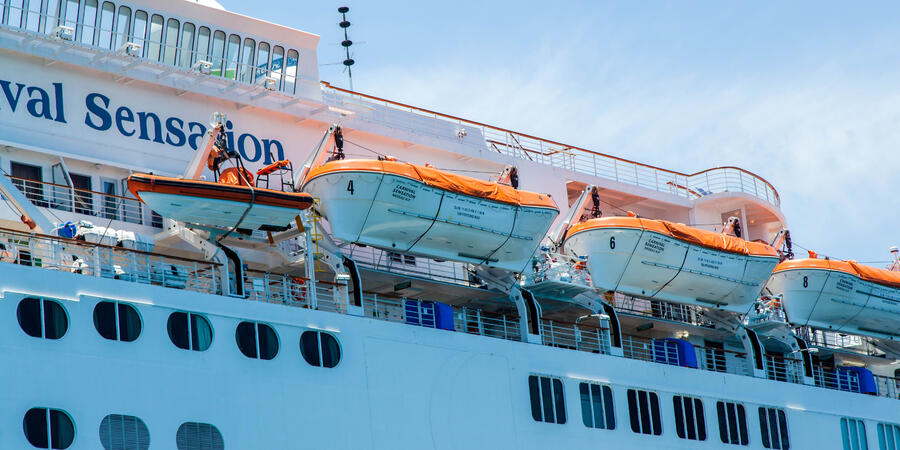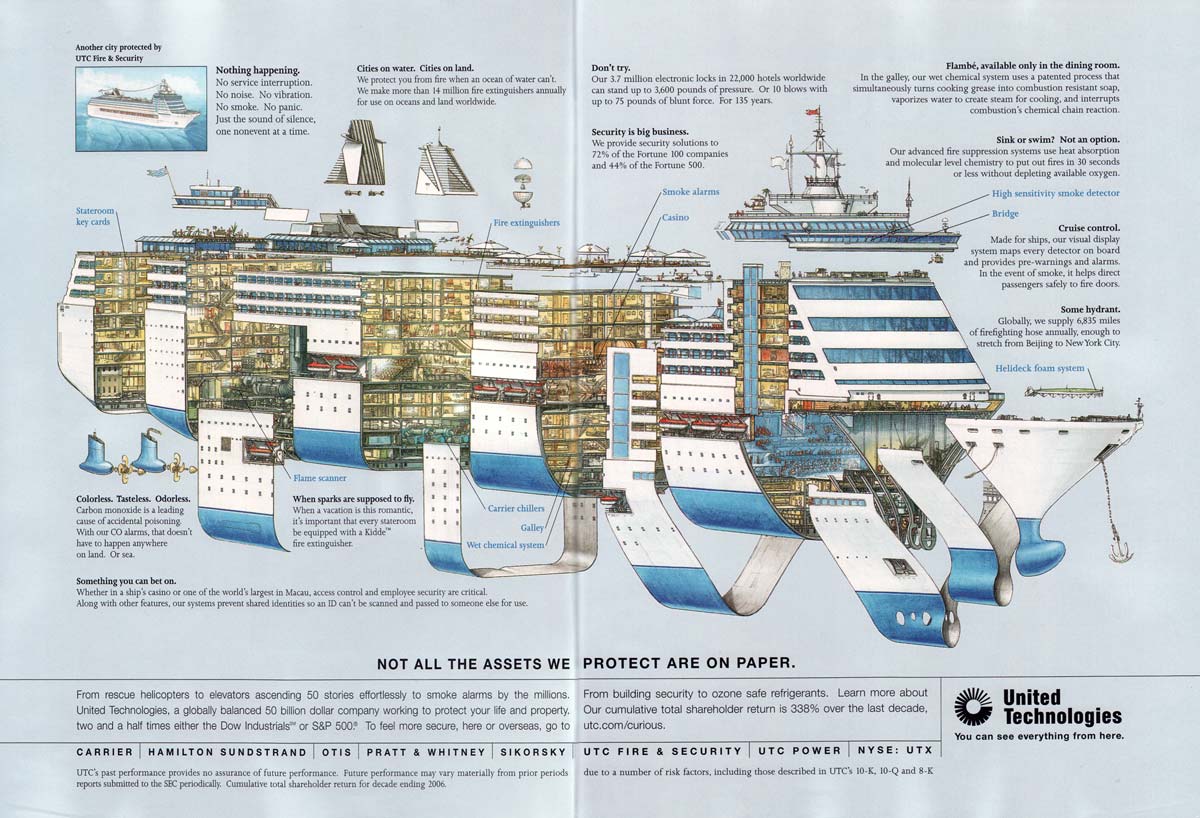Table Of Content

According to NASA, Archimedes’ principle states that the buoyant force (the differences between the upward and downward forces) on an object in water is equal to the weight of the water the object displaces. Cruise ships are designed not to be unstable or to tip over (capsize). The combination of a wide hull, (known as “the water plane area”) low centre of gravity, fuel, and ballast tanks filled with water keeps a cruise ship from tipping over in rough seas. A cruise ship displaces an amount of water equivalent to its own mass. The pressure of the sea pushes up against the vessel’s hull to counter the downward force of the ship’s mass. Unlike air, water cannot be compressed, so the combined forces create buoyancy.
Case Study: Royal Caribbean's Wonder of The Seas
Man overboard! How easy is it to fall overboard on a cruise ship, and how can you survive? - Florida Today
Man overboard! How easy is it to fall overboard on a cruise ship, and how can you survive?.
Posted: Wed, 26 Jul 2023 07:00:00 GMT [source]
Lastly, the upper portions of cruise ships need careful design, too. To float, the liner’s cabins and other facilities must be able to trap air. Since air is less dense than water, it becomes an additional aid for buoyancy. The upper portions of the cruise must also use lightweight materials to minimize the force of gravity pulling the boat downward. Mechanical stabilizers and bilge keels are also used to prevent the ship from rolling too much in rough seas. The stabilizers are retractable fins located on either side of the ship that can be extended to reduce the ship’s rolling motion.
How do cruise ships stabilize in rough seas?
A rounded U-shaped hull is preferable for creating buoyancy; some ships are flat-bottomed and while they still float, they are likely to move uncomfortably in heavy seas. Large ships such as cruise ships use displacement hulls, which aid with displacement, as the name suggests. As mentioned, these hulls push the water out of their way, and it resultantly tries to refill the space, causing the ship to stay afloat. Nowadays, cruise ships are made with the lightest and most buoyant possible material, but it is simultaneously incredibly durable and hardy. The second factor contributing to the stability of a cruise ship is its shape.
Center of Gravity
The large surface area of the cruise ship means there’s a very wide area of water to push up against the surface and, therefore, more force to keep the cruise ship afloat. Buoyancy is an upward force exerted by fluid, in this case, water, that opposes the weight of an object partially or wholly immersed, ie, a cruise ship. Shipbuilders will often construct a round-bottom displacement hull which has rounded edges to minimise the force of the water against the hull. Unlike other hull types such as the v-hull which rises out of the water and skirts the waves, round-bottom hulls push through the water, making them extremely stable and seaworthy. The hull of a ship is not only important for stability, but it also provides protection for the entire ship.
How Deep in the Water Does a Cruise Ship Sit?
If everything contained on a ship weighed the same, the center of gravity should be in the middle. However, engines, machinery, and fuel weigh much more than things like passenger spaces, cabins, or theaters. That’s why a strong wind hitting the side of the ship doesn’t tip it over. This is calculated as a wind heel moment and is a large part of the stability calculations for any vessel.
The Archimedes Principle states that an object immersed or partially immersed in a fluid will float when the weight of the water it displaces is equal to the object’s weight. Olsen are perfect for meandering along rivers and reaching narrow port openings, while larger ships like much of Royal Caribbean’s fleet are best suited for transatlantic sailings. Their size is much more relative to the body of water they’re floating on, which means they can be propelled upwards and remain steady as they sail. When cruising, the ship's engines power the azipods, propelling the ship forward through the water. The sails on a cruise ship are typically used for decorative purposes only, as they are not large enough to provide significant propulsion. So if the cruise ship can have less of a density than the ocean, that it floats on the surface.
Come aboard our adults-only cruises for a kids-free getaway at sea.
It is the point at which the weight of the ship is concentrated. The center of gravity must be kept as low as possible to maintain stability. Cruise ships also usually include a double hull—a hull within a hull.
Cruise ship rescues stranded men in kayak near Mexico - The Independent
Cruise ship rescues stranded men in kayak near Mexico.
Posted: Tue, 30 Jan 2024 08:00:00 GMT [source]
Cruising and Sailing
The engineering of cruise ships also plays a crucial role in their ability to float. The construction materials used, such as steel, are carefully chosen to ensure the ship is strong enough to withstand the forces of the ocean while remaining light enough to maintain positive buoyancy. One of the most impressive features of Wonder of the Seas is its size. With a gross tonnage of 236,857 and a length of 1,188 feet, the ship is larger than any other cruise ship in the world. Despite its massive size, the ship is able to float due to its displacement, which is the weight of the water that the ship displaces. In conclusion, the design of a cruise ship is a complex and intricate process that requires careful consideration of many different factors.

Continuous Monitoring and Safety Measures
They are also maintained and surveyed periodically to ensure the overall safety of life on board and also are equipped with the latest life-saving appliances such as boats and rafts for undesired events. In the case of the wood, the weight of the water displaced is small. The buoyant force is greater than the gravitational force, so the wood floats. The gravitational force on the lead exceeds the buoyant force, so the lead sinks. There are also ballast tanks, containing water that can be pumped from one end of the ship to the other, and from port to starboard, to maintain stability. Cruise ships possess round-bottom displacement hulls that resemble rectangles that have rounded edges.
If the center of gravity of an object is stable, it helps to balance the entire thing. The lower the center of gravity of an object, the less lightly it is to tip over. The upward buoyant force that is exerted on a cruise ship in the water is equal to the weight of the water that it displaces.
Most cruise ships typically have a draft of between 5 metres (16ft 5in ) and 10 metres (32ft 10in). The actual draft depends on the size of the vessel and how much fuel and ballast water is on board. So if you’ve ever wondered how cruise ships float and don’t tip over, you’re certainly not alone. Based on the source of energy utilized to stabilize a vessel, the systems can be divided into active and passive stabilizers. Since we’re in the cruising business, we find this stuff fascinating, too.
They are literally floating cities, with movie theaters, restaurants, casinos, bars, bowling alleys, swimming pools, and other things to keep their guests entertained. So what else separates them from, say, a solid piece of steel? Most modern cruise ships also have objects called stabilizing fins attached to the hull.
By maintaining proper weight and balance, ensuring the center of gravity is below the center of buoyancy, and using stabilizing systems, cruise ships can remain stable and afloat even in rough seas. The center of gravity is a crucial factor in determining a cruise ship’s stability. It is the point at which the weight of the ship is evenly distributed.
They can turn 360 degrees for maneuverability, and the rpm of the propeller varies depending on the required ship speed. In order to maintain stability during movement, a ship must have negative buoyancy or neutral buoyancy. Neutral buoyancy occurs when the ship is neither fully immersed nor fully exposed to the open seas. Ships with negative buoyancy tend to roll side-to-side instead of rolling fore-and-aft like boats with positive buoyancy.
They produce a moment that can oppose the external forces thereby stabilizing the entire vessels. Archimedes is thought to have run naked through the streets shouting “Eureka! ” (“I have it!” in Greek) after realizing that the amount of water displaced from his bath was equal to his body’s weight. It’s one of life’s great ironies that the popularity of cruising today is based on the glamorous image projected in a film about the sinking of an ocean liner 105 years ago. The 25 million passengers who cruise each year now do so safe in the knowledge that a repeat of the Titanic disaster is infinitely less likely than the chances of them ever owning a private yacht.

No comments:
Post a Comment